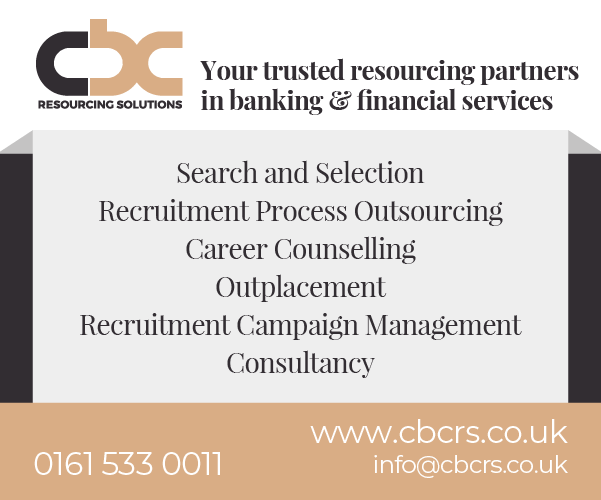
Asset finance providers are increasingly turning to artificial intelligence (AI) to assist with credit decisions.
AI Decision Engines are being used to predict which potential customers are likely to pass the company’s credit process, as well as to identify which leads are likely to convert into customers in the first place.
These Decision Engines could answer a key question for asset finance providers: are we getting customers from a particular marketing source that fail our credit process or result in suspected fraud? They can also help improve customer retention.
Ernst and Young reported a success rate of 67% in predicting which customers could become dormant for a major bank by utilising AI algorithms. AI Decision Engines can even be used to recognise periods (or prerequisite events) when customers are likely to be contemplating buying an asset.
The vast majority of AI Decision Engines are used in credit decisions, risk and fraud processes.
Most tend to focus on key areas or are used in isolation of the broader customer journey. However, an AI Decision Engine can be utilised at any given point during the lifecycle of an asset finance transaction.
What is an AI Decision Engine and how does it work?
A Decision Engine is a rule-based system that is used to determine particular outcomes. At a simple level, it is a series of ‘IF’ conditions.
For example, IF Credit_Score = X, THEN do Y. When these rule engines are combined with AI capability, they can predict future customer and fraud outcomes through the analysis of historical datasets.
An AI Decision Engine does not seek to prove that machines know better, rather it codifies human experience into a set of rules that can be automatically executed.
It can also test that experience (and gut feeling) with an empirical approach by looking at historical data.
The key difference between automated credit decisions and manual ones is the speed of execution inherent in automated systems.
AI Decision Engines possess a codified learning and review loop, enabling them to learn as new data becomes available. It is important to note that human monitoring is essential throughout the process in order to train, monitor and clean datasets, and to resolve any ambiguity.
Building your own AI Decision Engine
In order to build the foundations for your AI Decision Engine, you must consider the wider data ecosystem that will make it successful.
There are three building blocks: Data & Governance; Rules & Policy; and AI & Learning.
Before you begin, there are a series of questions you need to answer to determine whether an AI Decision Engine is the right solution for you.
- Does the speed of credit decisions matter to your customer?
- Does your lending or leasing technology platform support automated credit decisions and AI capability?
- Do you have the capability to build your own bespoke Engine?
- Do you have access to software integrators?
- Do you have access to a Credit Reference Agency application programming interface (API)?
- Do you have historic customer or industry datasets to train your algorithms?
If your answers are predominantly yes, then you are ready to move forward. If not, you will need to consider how your business could acquire these capabilities internally or from external providers.
The models in the table below give a detailed insight into the building blocks of your AI Decision Engine strategy. The Starter model only requires initiatives that are absolutely necessary.
More advanced businesses will be aiming to move towards the Mature model. You can pick and mix requirements from the Starter and Mature models that best suit your business.
An initial pragmatic approach, and one we would suggest, would be to implement a standard automated Decision Engine (typically described as a ‘Scorecard’) that could later become AI-enabled.
| Building blocks | Requirements and considerations | Starter model | Mature model |
|---|---|---|---|
|
AI and learning |
Buy v build strategy | YES | YES |
| Lending and leasing platform (Decision Engine) capability analysis | YES | YES | |
| Analysis of available cloud AI Decision Engine solutions | YES | YES | |
| Feedback loop design | YES | YES | |
| Algorithm training | YES | YES | |
|
Rules and policy engine |
Business specific rules: | ||
| Portfolio rules and limits | YES | YES | |
| Funder covenants and policy | YES | YES | |
| Internal business strategy | NO | YES | |
| Manual intervention checkpoints | YES | YES | |
| Underwriting rules | YES | YES | |
| Credit scorecard | YES | YES | |
| Risk rules | YES | YES | |
| Fraud signals | NO | YES | |
| Asset security | YES | YES | |
| End-of-life rules | YES | YES | |
| Generic rules: | |||
| Accounting and VAT rules | YES | YES | |
| Industry rules and models | YES | YES | |
| Regulatory requirements | YES | YES | |
|
Data and governance |
GDPR | YES | YES |
| Data stewardship/governance: | |||
| Architecture | YES | YES | |
| Data asset classification | YES | YES | |
| Data reliability | YES | YES | |
| Data security, data ethics and permissions | YES | YES | |
| Data sources: | |||
| Customer data | YES | YES | |
| Open Banking and PSD2 | NO | YES | |
| Customer business/credit performance | YES | YES | |
| Asset supplier data | NO | YES | |
| Asset registration and ownership data | YES | YES | |
| Internal business data: | |||
| Customer outcomes | YES | YES | |
| Customer behaviour | NO | YES | |
| Profit & revenue data | NO | YES | |
| Asset performance, depreciation and usage | NO | YES | |
| Credit reference agency: | |||
| Credit and risk | YES | YES | |
| KYC/AML | YES | YES | |
| Fraud | YES | YES | |
| Adverse media/data | YES | YES | |
| Macroeconomic data: | |||
| Interest rates | YES | YES | |
| Economic and industry performance | NO | YES | |
| Digital/omnichannel marketing data: | |||
| Marketing optimisation | NO | YES | |
| Customer journey | NO | YES | |
| Customer behaviour | NO | YES | |
Source: Downswood
How AI can protect market share for asset finance companies
Asset finance companies that do not exploit the capabilities of AI Decision Engines run the risk of losing business because an AI-powered competitor will be able to make credit decisions more quickly.
Leigh Baker, co-founder of start-up EquipmentConnect, commented that the asset finance space is “nowhere near as advanced as in the retail lending space, probably about five to 10 years behind the curve”.
“This,” he says, “was driven by the lack of real-time data on SMEs, as they only have to file accounts annually (if incorporated). Now, though, with the advent of Open Banking and real-time management accounts extractors, this is changing.”
AI-powered asset finance providers will also be able to plug into the next generation of fintech credit aggregators that require indicative decisions in real-time.
In the case of the fintechs, these indicative decisions are fed into their credit comparison websites via an automated feed (API).
Commercial customers looking for a standard loan using online aggregators could discover products that they were not aware of, such as asset finance.
Asset finance companies without the technology to make real-time decisions will be invisible to potential clients using these online aggregators.
Therefore, asset finance businesses need to harness the power of AI Decision Engines. It is the only way they will ensure that they are ahead of the curve – and the competition.
* Downswood was founded by Carl Davis, a former chief technology officer, who has led many award-winning projects in the financial services sector. Projects include the digitisation of asset finance and invoice discounting and delivering data-driven automation. Davis holds an MBA degree from the University of Cambridge. Downswood helps clients realise their digital potential through strategic technology consultancy, technology procurement, systems integration and software development.





